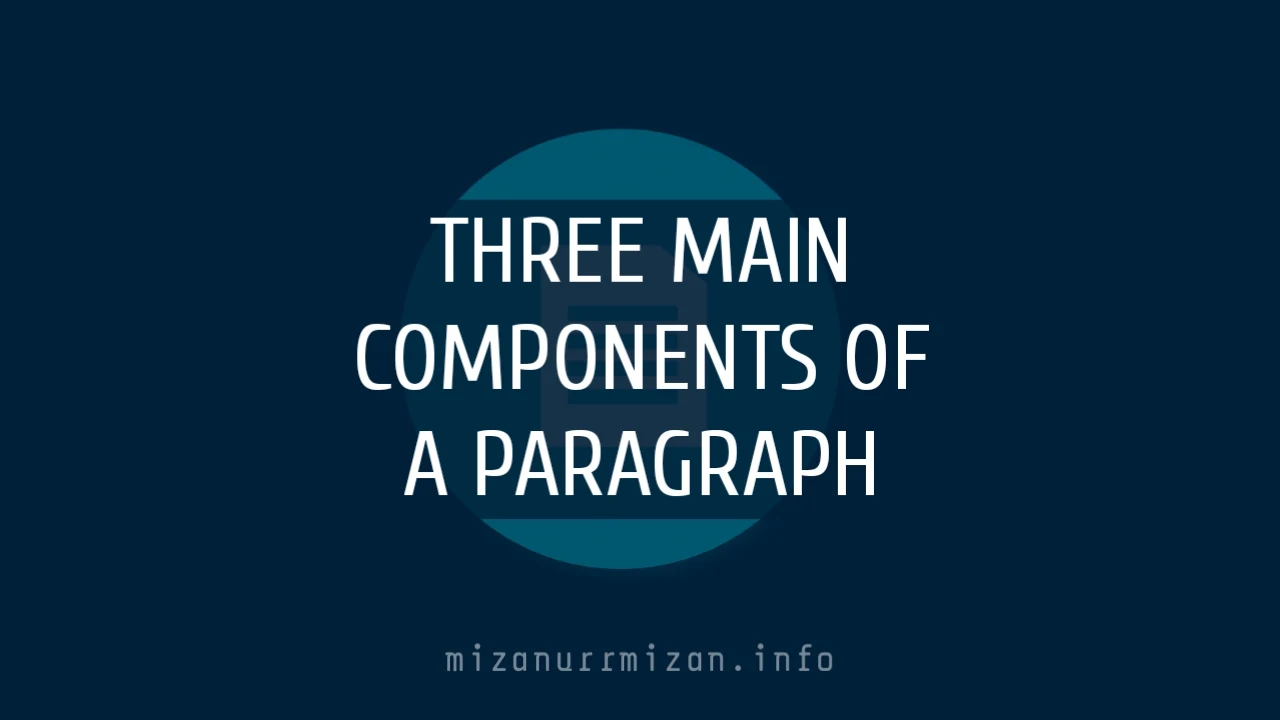A paragraph is the fundamental unit of written communication, crucial for conveying ideas effectively. Comprising a topic sentence, supporting sentences, and a concluding sentence, it encapsulates a cohesive thought or argument. These components guide readers through the writer's train of thought, ensuring clarity and coherence. Understanding the role of each component is paramount for crafting compelling prose. In this article, we explore the three main components of a paragraph and their significance in facilitating clear and persuasive writing.
1. The Topic Sentence
At the heart of every paragraph lies the topic sentence. This essential component serves as the main idea or thesis statement of the paragraph, conveying the overarching point that the writer intends to discuss. The topic sentence provides the reader with a clear roadmap of what to expect in the ensuing sentences, guiding them through the paragraph's content and establishing its focus.
A topic sentence should be concise, specific, and relevant to the paragraph's subject matter. It encapsulates the key theme or argument that the writer wishes to explore, setting the tone for the rest of the paragraph. By articulating the central point upfront, the topic sentence helps maintain coherence and coherence within the paragraph, preventing the discussion from veering off track.
2. Supporting Sentences
Once the topic sentence lays the groundwork, the supporting sentences step in to provide depth, detail, and evidence to bolster the paragraph's main idea. These sentences expound upon the topic sentence, offering explanations, examples, analysis, and relevant information to substantiate the writer's argument or narrative.
Supporting sentences serve as the backbone of the paragraph, supplying the necessary context and elucidation to enrich the reader's understanding. They should be logically organized and interconnected, forming a cohesive narrative that flows smoothly from one sentence to the next. Each supporting sentence should contribute meaningfully to the overarching theme of the paragraph, reinforcing the central argument and providing nuance and clarity to the discussion.
3. The Concluding Sentence
As the paragraph nears its conclusion, the concluding sentence brings closure and synthesis to the ideas presented therein. This final component serves to reinforce the paragraph's main point and provide a sense of resolution or transition to the next paragraph or section of the text.
The concluding sentence may summarize the key points discussed in the paragraph, reiterate the significance of the topic sentence, or offer a thought-provoking insight or observation. It should leave a lasting impression on the reader, tying together the various strands of the paragraph's argument and leaving them with a sense of completeness and coherence.
Conclusion
The three main components of a paragraph— the topic sentence, the supporting sentences, and the concluding sentence—work in tandem to create a cohesive and compelling unit of thought. The topic sentence sets the stage, the supporting sentences provide substance, and the concluding sentence brings closure, ensuring that the paragraph serves its intended purpose within the broader context of the written work.
Mastering the art of paragraph construction is essential for effective communication and persuasive writing. By understanding the role and significance of each component, writers can craft paragraphs that engage, inform, and persuade their readers, ultimately enhancing the clarity and impact of their written discourse. As we continue to refine our writing skills, let us remember the power of the paragraph and its ability to shape and convey our ideas with precision and eloquence.


Post a Comment
Write you think.